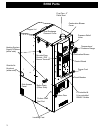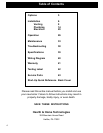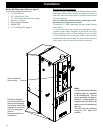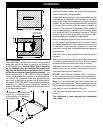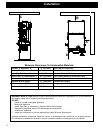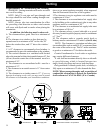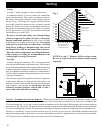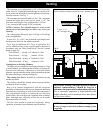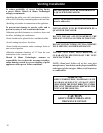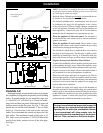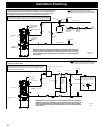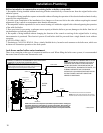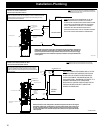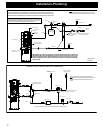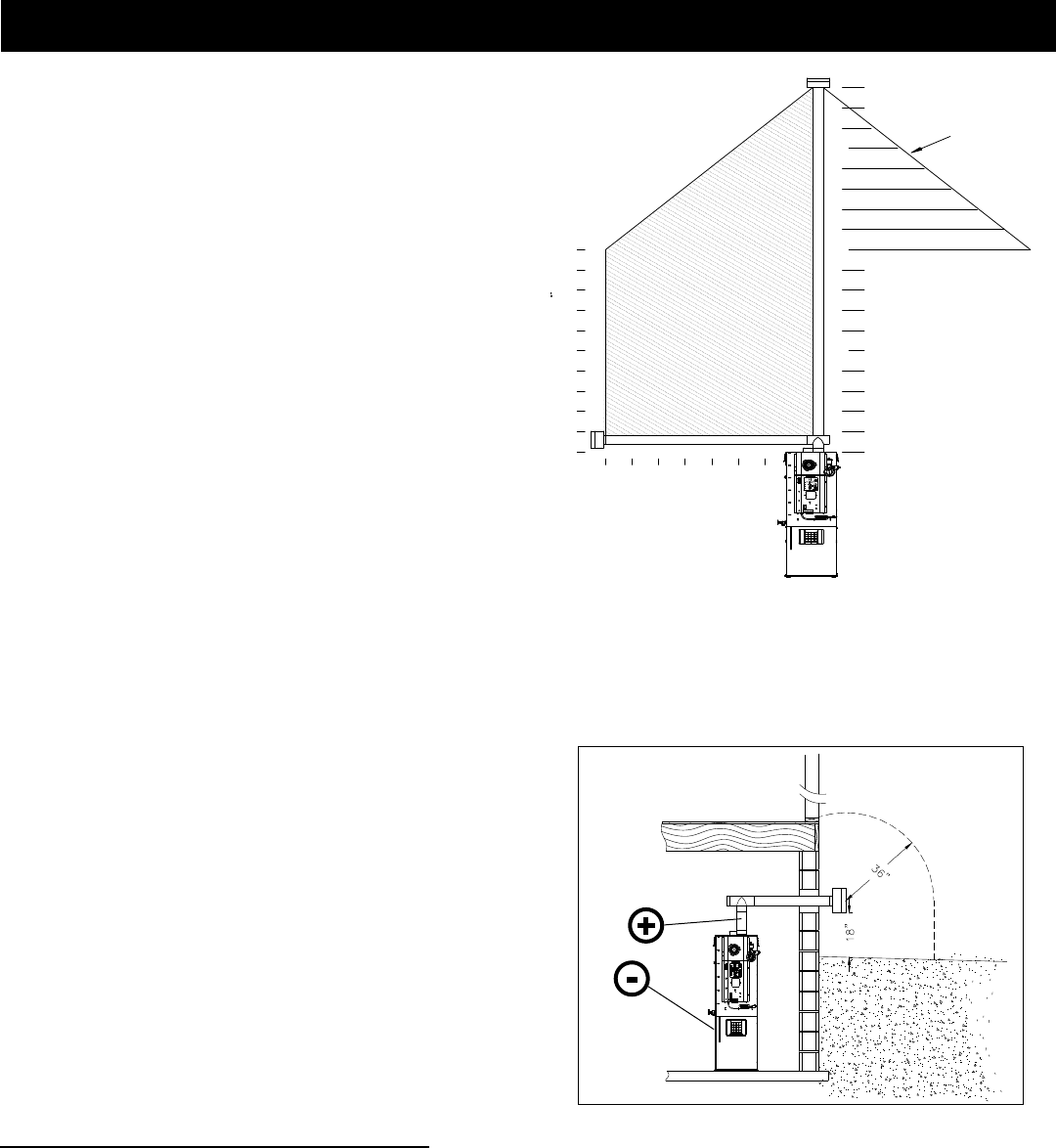
10
Venting
Use only 3” pellet vent pipe to vent your pellet boiler.
A combustion blower is used to extract the combustion
gases from the rebox. This creates a negative pressure in
the rebox and a positive pressure in the venting system as
shown in Fig. 4. The longer the vent pipe and more elbows
used in the system, the greater the ow resistance, and the
greater the chance for creosote accumulation. Because of
these facts we recommend using as few elbows as possible
and 18 feet or less of vent pipe. The maximum horizontal
run should never exceed 8 feet.
Be sure to use wall and ceiling pass through ttings
(which are approved for pellet vent pipe ) when going
through combustible materials. Be sure to use a starting
collar to attach the venting system to the stove. The starting
collar must be sealed to the stove ue collar with high
temp silicone caulking or aluminum tape, and screwed
into the units’ ue collar in a minimum of three (3) places.
Due to low exhaust temperatures, increasing the diameter
of the venting or exceeding the recommendations of the
venting graph, is strongly discouraged.
Vent Pipe
3” pellet vent pipe (also known as “PL” vent) is constructed
of two layers with air space between the layers. This air space
acts as an insulator and reduces the outside surface temperature
to allow a minimum clearance to combustibles as low as 1
inch. In Canada the minimum clearance to combustibles is
3 inches. Check with the venting manufacturer to be certain
of specied clearances.
The sections of pipe lock together to form an air tight seal
in most cases; however, in some cases a perfect seal is not
achieved. For this reason and the fact that the unit operates
with a positive vent pressure, we specify that all joints
within the structure should be secured with at least 3
screws, and sealed with silicone caulking.
Fig. 3
Creosote - Formation and Need for Removal - When wood is burned slowly, it produces tar and other organic vapors,
which combine with expelled moisture to form creosote. The creosote vapors condense in the relatively cool chimney ue
of a slow-burning re. As a result, creosote residue accumulates on the ue lining. When ignited, this creosote makes an
extremely hot re. The pellet vent pipe should be inspected at least twice monthly during the heating season to determine
if a creosote buildup has occurred. If creosote has accumulated it should be removed to reduce the risk of a chimney re.
Guidance on minimizing creosote formation and the need for periodic creosote removal: The chimney should be inspected
during the heating season to determine if a creosote build-up has occurred. If a signicant layer of creosote has accumulated,
1/8” (3mm) or more, it should be removed to reduce the risk of a chimney re.
NOTE:Use only 3” diameter Pellet venting system.
Be sure to inspect and clean exhaust venting system
frequently.
10
Total Lineal Feet Combined
Should Not Exceed 18' as
measured from the outlet.
0
2
6
4
8
68 4 2
5
Altitude in Thousands of Feet
10
Maximum Horizontal Run 8'
10
5
7
6
9
8
18
15
4
The Total Lineal Feet
Decreases as the
Altitude Increases
Fig. 4
-
+




